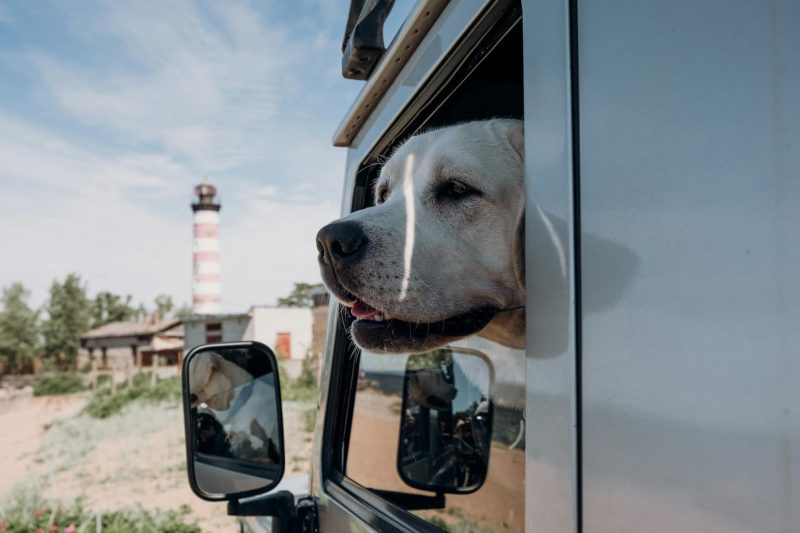
Dog Travel Gear & Vetted Advice
Planning dog-friendly adventures? This hub pulls together PawTripper’s best advice so you can travel smoothly from driveway to destination. Start with road-trip prep (packing lists, rest-stop timing, heat safety), then compare car restraints and crate setups that actually fit real cars. Heading into the city? Our public transport guides explain when carriers are required and how to ride with less stress. Flying soon? Check airline-ready carrier sizing and a gentle airline carrier training plan so the carrier feels like home. Where rules apply -council leash areas, transport policies or restraint laws, we link directly to the official pages so you can double-check the latest before you go. Expert-led and community-powered, everything here is written for Australian pet parents who want safe, simple, tail-waggy travel.
Prepare for a roadtrip with your dog
Road trips shine when you plan like a pro. Build a realistic packing list (water, shade, restraint, first-aid) and map short stretch breaks every 1–2 hours. Keep meals light 2–3 hours before you roll, anchor a crate low and stable, and use sunshades or airflow to manage heat. New to long drives? Do a couple of practice runs to tweak your setup.
Advice for Roadtrips with Dogs
10 Tips for Road Trips with Dogs
Dog travel gear & pet carriers for dogs in cabin
Start with safety (crash-tested crate or properly fitted seat-belt harness), then layer comfort: cooling mat, bed/mat, spill-proof bowls and boot liners. For carriers, measure correctly (nose-to-tail base and floor-to-top of head/ears) and do a “fit & lift” test. Seniors may benefit from ramps/steps; summer travellers from paw balm and dog-safe sunscreen.
Dog Travel Gear
Top 3 dog walking bags
Dogs on public transport
City day out with the pup? Too easy. Trains, trams, ferries and buses all play by different rules, so we keep it simple: when carriers are needed and where to perch so tails and toes aren’t in the way. Start with short hops, pack a collapsible bowl and a spare lead and bring high-value treats for platform patience. Some operators want pups fully inside a carrier; others allow leashed dogs on certain services – always check the operator’s page we link before you tap on.
Dogs on public transport
Public Transport with Dogs in Sydney
Dogs on public transport
Public Transport with Dogs on the Gold Coast – Hopo Ferry & More
We keep this page fresh with real-world tips and links to the official sources so you’re never guessing. If you spot an update we should know about, give us a nudge and we’ll fix it fast.
Dog Travel Gear & Advice – FAQs
How do I confirm rules before I go?
Hop to the source: council pages, transport operators and venue sites. Policies change, so give them a quick check before you clip on the lead.
What should I pack for a road trip with my dog?
Water & bowl, lead, waste bags, seat-belt harness or crate, bed/mat, shade, towel, high-value treats, first-aid kit, meds, and updated ID/microchip details.
How often should we stop on long drives?
Short leg stretch every 1–2 hours; proper play/meal break every 3–4. Offer water at each stop and keep it breezy inside the car.
What’s the safest setup for dogs in the car?
Crash-tested crate or a properly fitted seat-belt harness clipped to the vehicle belt. Good ventilation, no laps, and windows down only a smidge at speed.
Do restraint laws apply in Australia?
Yep—rules vary by state/territory. Check your state road authority and always secure your co-pilot so they can’t distract the driver.
How do I manage heat and hydration?
Never leave pups in parked cars. Use shade/airflow, cooling mats, and frequent water breaks. Bright-red gums or lethargy? Pull over and cool down.
My dog gets car sick—what helps?
Practice short drives, skip big meals 2–3 hours before, anchor the crate low and stable, try window ventilation, and chat to your vet about anti-nausea options.
What belongs in a dog first-aid kit?
Gauze, cohesive bandage, saline, antiseptic wipes, tweezers/tick tool, scissors, thermometer, wound pads, spare lead, and your dog’s prescribed meds.
How do I choose the right travel crate or carrier?
Measure nose-to-tail base and floor-to-top of head/ears. Your dog should stand, turn and lie comfortably. Solid ventilation and secure fastenings are a must.
How do I train my dog to love a crate/carrier?
Make it a happy place at home first (meals, treats, chews). Build calm duration, then add short drives. Keep sessions short, positive and end on a win.
Are dogs allowed on public transport?
Depends on the operator. Many require carriers and prefer off-peak travel. Peek at the operator’s page for the current rules before you tap on.
Are assistance dogs treated differently?
Yes. Accredited assistance dogs have access rights under Australian law and must remain under effective control. Venues can ask for proof of accreditation.
What ID should my dog wear while travelling?
Up-to-date microchip details plus an engraved ID tag with a reachable mobile. Bonus points for a temporary travel tag with your trip contact.
